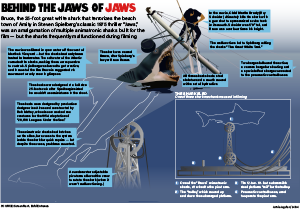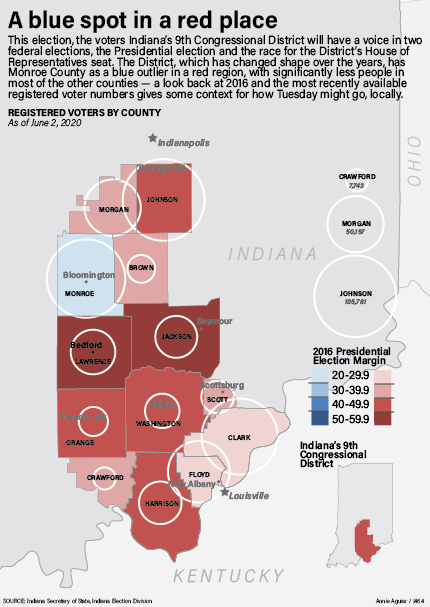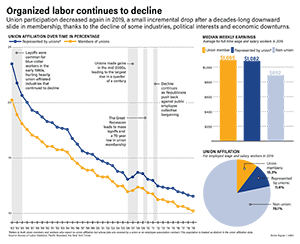
I felt as if my previous projects for this class were a little lacking, so I really wanted to do something that pushed me and would be a really solid piece — at first I was thinking about doing an instructional recipe diagram for key lime pie (I love both eating and making key lime pie) or a step-by-step process for the old-school process of comic inking and coloring, but couldn’t find a way of doing the former I liked/wouldn’t be a bunch of glop in a bowl and couldn’t find a clear process source for the latter. This was my next idea, a diagram explaining the mechanisms and story of the animatronic sharks from “Jaws,” one of my favorite films ever. I didn’t realize until I was almost done, but this is now the second “Jaws”-related assignment I have done for a class taught by Steve Layton. What can I say? It’s a good movie.
I went in search of some resources for this diagram and a still from the movie I could confidently illustrate and combine a diagram version of underneath the water for that — luckily, “Jaws”‘ 40th anniversary in 2015 lead to a whole new round of nostalgia-driven content, including some looks back at the animatronic sharks Spielberg and company used in the film.
I knew that my illustration would be focused on the above-water action and the mechanisms below, but my original plan of having all of it in one component became a little unwieldy once I realized the scale of the mechanism that I wanted to recreate. I instead chose to break away the diagram into a box and have essentially two annotated diagrams, 1. the larger illustration and the top of the pivot arm to show dimensionality and share some tidbits from production and 2. the labeled workings of the so-called “shark sled” in an awkwardly left behind negative space to the lower right of the illustration.
Something I went back and forth on was how to treat the shark’s body underwater — while I had some useful resources of the opened-up body suspended above the water, I had nothing underwater AND assumed that they would of course shut the hatch for shooting underwater. I also wasn’t sure how to meaningfully render the above/under water difference between the two parts of the shark, and I think the outline approach for the submerged shark body works in this case and draws attention to the big old pivot arm he’s attached to. I also chose to not further illustrate the sinking boat, because I thought it would be a distraction, I didn’t have a reliable resource for it and most of it would end up being covered by the breakaway box and annotations anyway.
I’m especially proud of the larger illustration — a gradient mesh approach just wasn’t working for me on the shark’s head, so I ended up using a base color and doing a bunch of shapes that I then applied a Gaussian blur to to “blend” into the illustration. A clipping mask in the shape of the shark’s outline cleaned up any blur extending outside the lines, and it was done. Also, I spent a fair amount of time on the proper 3D effects for the pivot arm illustration, making a rectangular prism from 4 differently-rotated iterations of the 2D arm I drew for the shark sled diagram. Overall, I’m very happy with this!


